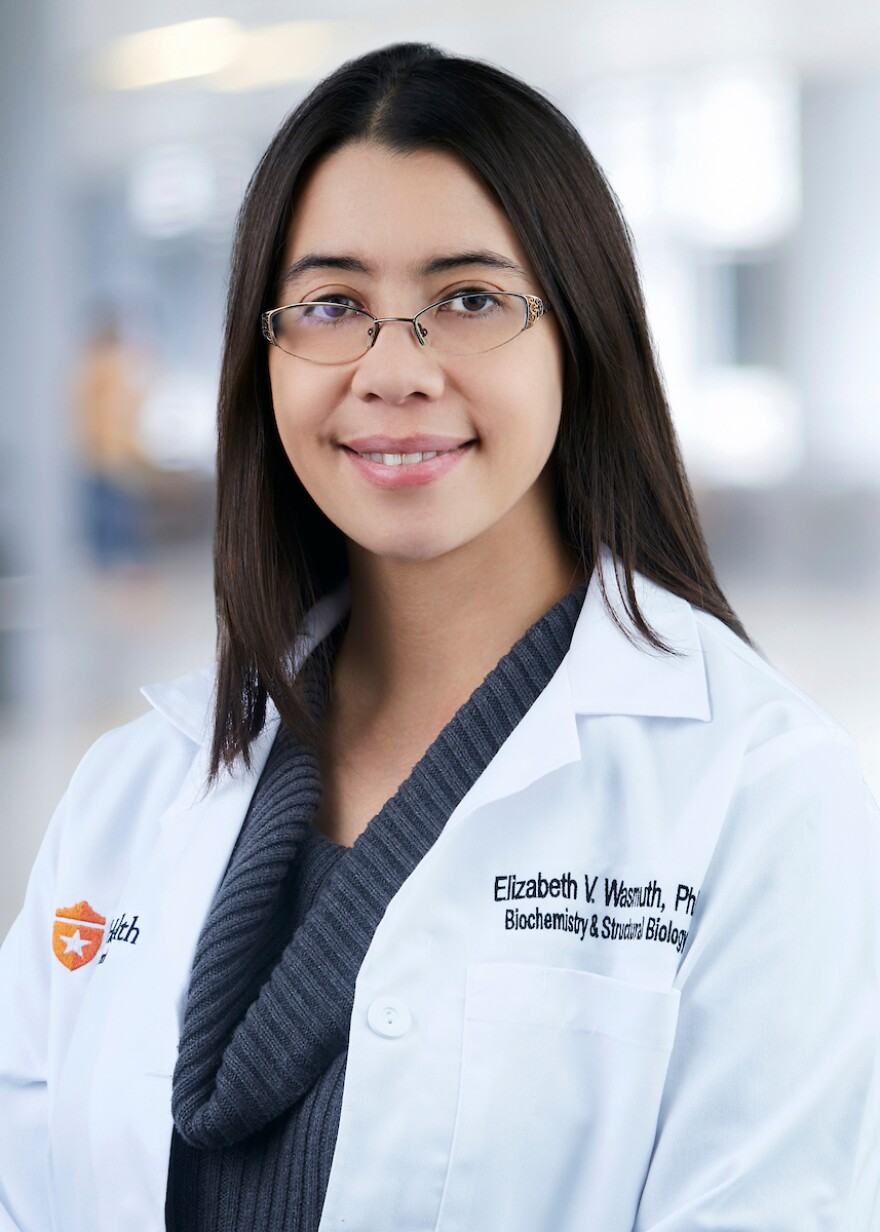Elizabeth Wasmuth, PhD, brings a unique perspective to prostate cancer research.
“What got me into science is that I'm fundamentally interested in how form follows function, just like Frank Lloyd Wright was my favorite architect. So I was inspired to think about science that way,” Wasmuth said.
Wasmuth is a structural biologist and an assistant professor in the Department of Biochemistry and Structural Biology at the Joe R. and Teresa Lozano Long School of Medicine at The University of Texas at San Antonio. A structural biologist is a scientist who visualizes the three-dimensional shapes and structures of biological molecules. There aren’t many structural biologists in cancer research, but Wasmuth’s habit of studying form to understand function has led to a breakthrough in prostate cancer research.

Wasmuth thinks of the molecules she’s trying to visualize as machines. She considers all the moving parts, then tries to answer some questions.
“How does the machine look when it normally functions?” Wasmuth asks, “Then how does the machine look when it's broken, and in the context of cancer?”
One protein, in particular, drives most prostate cancers. It’s the androgen receptor. It’s also the target of most prostate cancer treatments, but most of those treatments are broad-spectrum. As Wasmuth put it, they’re ‘one-size-fits-all,’ and don’t work as well as they might if doctors could more carefully target the cancer. Patients also tend to develop resistance to the current treatments over time.
What the field needed was a clear visualization of the androgen receptor 'machine.' It needed the skills of a structural biologist.
“I spent about six months, full-time, doing nothing else,” Wasmuth said, “optimizing protocols and trying to crack the code of how I could get that machine isolated.”
In her lab, Wasmuth was able to isolate it in a state pure enough to image it using a cryogenic electron microscope, which revealed that it is encoded to be dynamic; to change its shape and evade being seen.
This is a big breakthrough in prostate cancer research, and Wasmuth is a pioneer.
“Now that we have this machine isolated, we can test new therapeutics that are being developed. It allows us to illuminate how potent they are, whether they're actually hitting the target,” Wasmuth explained.
“We can see its quirks and visualize what it's been hiding from the field for decades,” she continued. “That allows us, like basic cancer researchers, to couple with physician scientists to develop newer drugs to really keep the cancer at bay, while preventing more dangerous cancers from forming.”
They can also study the androgen receptor when it’s running like a well-oiled machine, observe what changes occur when cancer develops, and perhaps learn how to prevent it in the first place.
Science & Medicine is a collaboration between TPR and The University of Texas Health Science Center at San Antonio, about how scientific discovery in San Antonio advances the way medicine is practiced everywhere.



